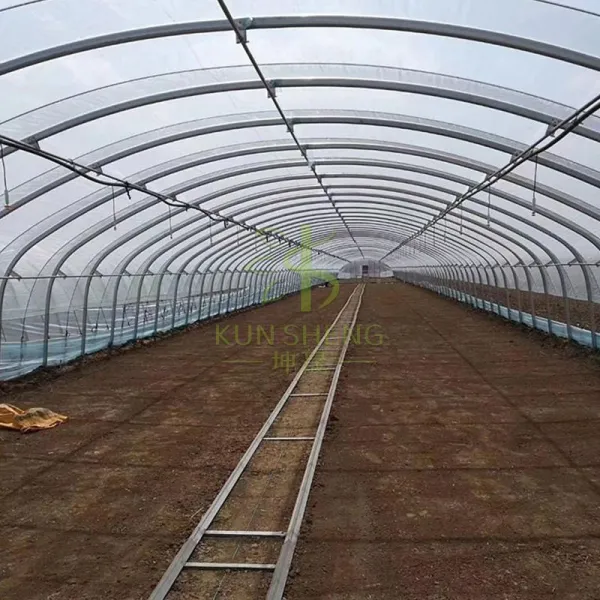- Beauty & Personal Care
- Business Services
- Chemicals
- Construction & Real Estate
- Consumer Electronics
- Electrical Equipment & Supplies
- Electronic Components & Supplies
- Energy
- Environment
- Excess Inventory
- Fashion Accessories
- Food & Beverage
- Furniture
- Gifts & Crafts
- Hardware
- Health & Medical
- Home & Garden
- Home Appliances
- Lights & Lighting
- Luggage, Bags & Cases
- Machinery
- Measurement & Analysis Instruments
- Mechanical Parts & Fabrication Services
- Minerals & Metallurgy
- Office & School Supplies
- Packaging & Printing
- Rubber & Plastics
- Security & Protection
- Service Equipment
- Shoes & Accessories
- Sports & Entertainment
- Telecommunications
- Textiles & Leather Products
- Timepieces, Jewelry, Eyewear
- Tools
- Toys & Hobbies
- Transportation
What is the difference between single span and multispan greenhouses?
Greenhouses revolutionize agriculture by providing controlled environments for plant growth, extending growing seasons, and enhancing crop yields. Two common types are single span and multispan greenhouses, each offering distinct features and benefits. Let's delve into the differences between these structures and explore their various aspects.
Functional Features
Single span greenhouses consist of a single structure with one roof, creating a clear span across the width of the greenhouse. In contrast, commercial multispan greenhouses comprise multiple spans connected by columns or trusses, allowing for larger cultivation areas without sacrificing structural integrity.
Advantages and Disadvantages
Single span greenhouses are relatively simpler to construct and maintain, making them cost-effective for smaller operations. They offer flexibility in layout and are suitable for small to medium-sized farms or hobbyists. However, their limited size may restrict scalability and efficiency for larger commercial ventures.
On the other hand, multispan greenhouses excel in scalability and efficiency, catering to the needs of large-scale commercial agriculture. Their modular design allows for easy expansion, and they offer better utilization of space. Despite their higher initial investment and complexity in construction, multispan greenhouses often provide higher returns on investment due to increased productivity and economies of scale.

Indicator Differences
Several indicators differentiate single span and multispan greenhouses. Span width is a crucial factor, with single span structures typically having smaller widths compared to multispan ones. Additionally, the presence of columns or trusses in multispan greenhouses affects internal layout and cultivation practices, whereas single span structures offer unobstructed space.
Further reading:What is glass lined equipment used for?
Where to Find Vinyl Sheet Piling Sale?
Everything You Need to Know About Organic Colloidal Silica
Why HEORSHE Baby Bottles are the Ultimate Solution for Breastfeeding Moms
10 Questions You Should Know about Sponge Fish Tank Filters
Ultimate Guide to SS316 Water Storage Tanks
DIY Tips for Choosing the Best Rubber Seal Parts - Which One is Right for You?
Applications
Single span greenhouses find applications in small-scale agriculture, urban farming, research, and educational purposes. They are popular among hobbyists and community gardens due to their manageable size and versatility.
Multispan greenhouses are ideal for large-scale commercial cultivation of fruits, vegetables, flowers, and ornamental plants. They are commonly used in industrial agriculture, nurseries, and greenhouse complexes, where maximizing production efficiency is paramount.
Other Key Contents
Both types of greenhouses share common features such as ventilation systems, heating, and cooling mechanisms, as well as irrigation and lighting systems. However, the scale and complexity of these components may vary based on the size and purpose of the greenhouse.
In terms of environmental impact, both single span and multispan greenhouses offer benefits such as reduced water usage, protection from adverse weather conditions, and lower reliance on chemical pesticides. However, the energy footprint of multispan greenhouses may be higher due to their larger size and the need for sophisticated climate control systems.
In conclusion, the choice between single span and multispan greenhouses depends on factors such as scale, budget, intended crops, and long-term goals. While single span structures offer simplicity and flexibility, multispan greenhouses provide scalability and efficiency for large-scale agriculture. Understanding the differences between these two types enables growers to make informed decisions based on their specific needs and resources.
How to Choose grp sectional water storage tank
Benefits of Using Steel Fibers in Concrete
How to Choose Pall Ring Packings: A Step-by-Step Guide
How to Choose the Best Automobile Motorcycle Oil Seal
10 Questions You Should Know about He or She Teether
What are the benefits of PVC fills?
How Does hydraulic pump Work?
Next
None
Related Articles
If you are interested in sending in a Guest Blogger Submission,welcome to write for us!












Comments
0